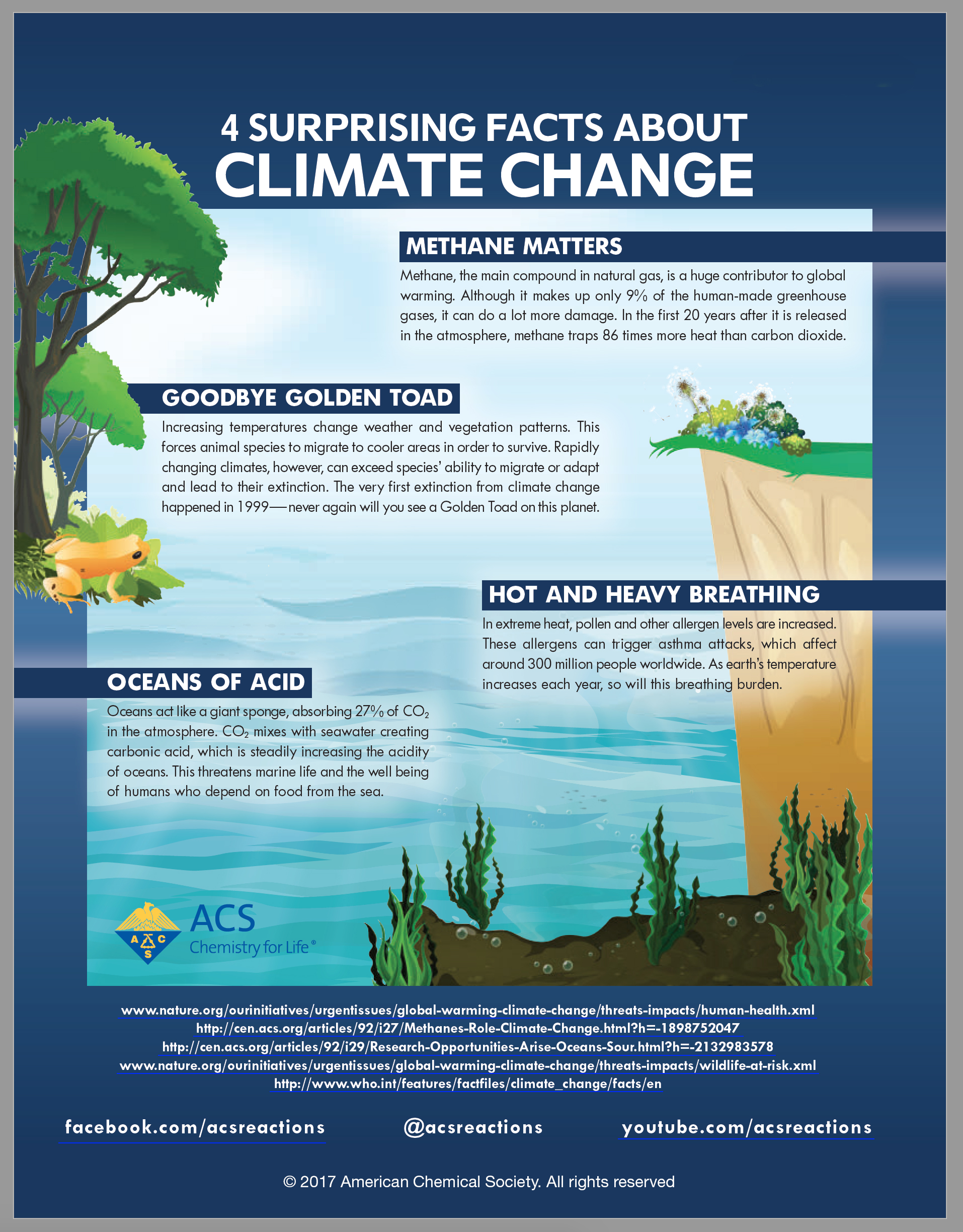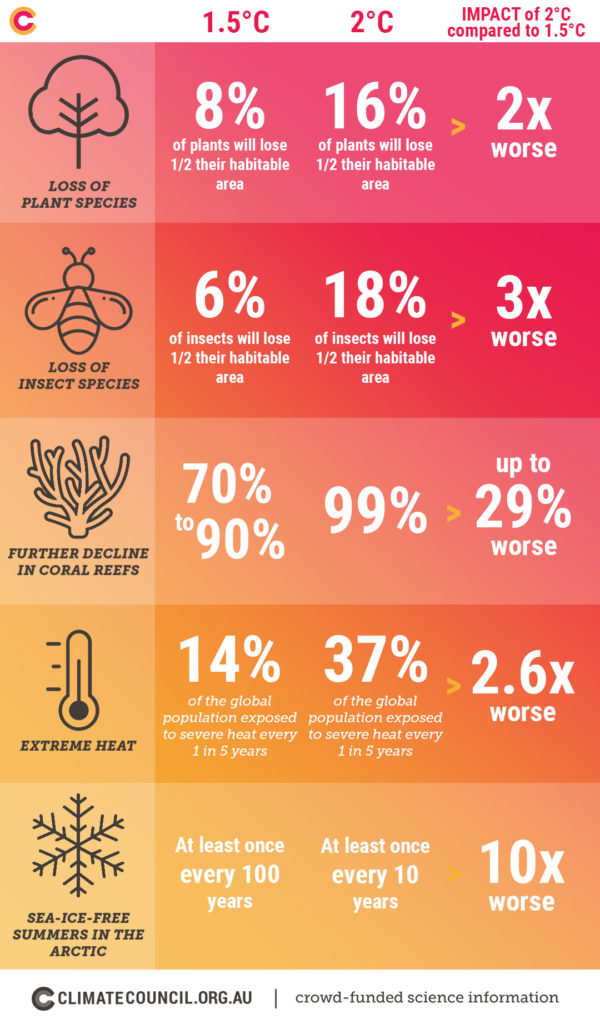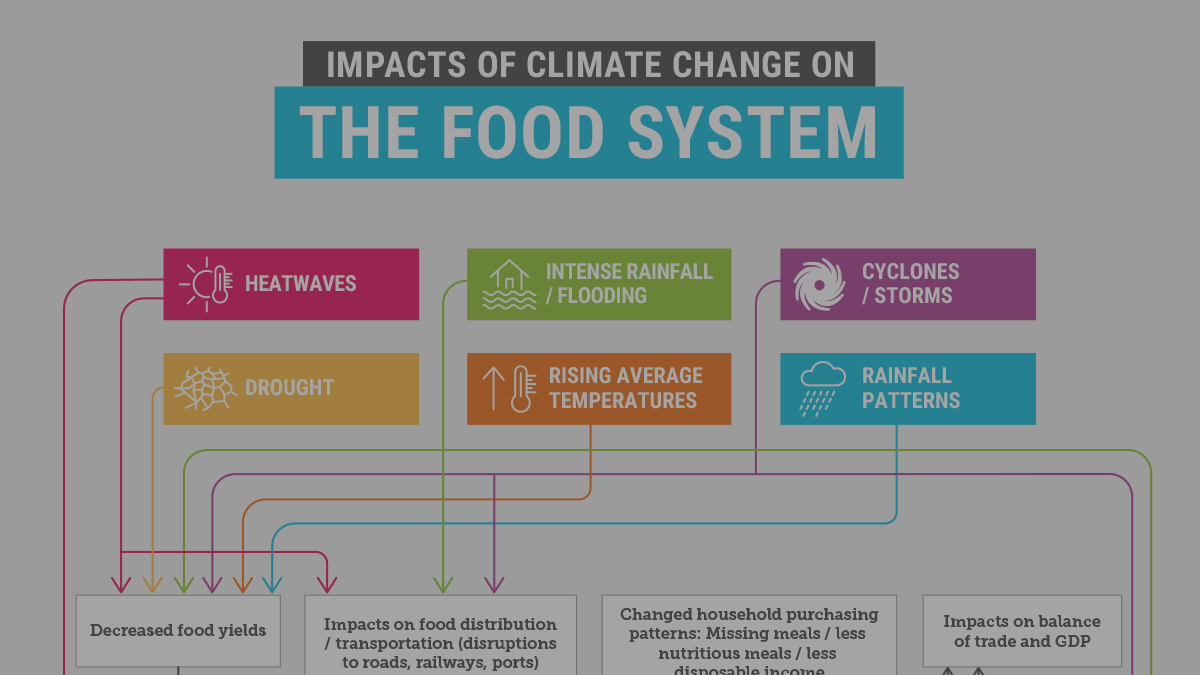

Increases in the frequency and intensity of extreme weather events, such as heat waves, droughts, and floods, can increase losses to property, cause costly disruptions to society, and reduce the affordability of insurance.Changing ecosystems influence geographic ranges of many plant and animal species and the timing of their lifecycle events, such as migration and reproduction.Changes in the patterns and amount of rainfall, as well as changes in the timing and amount of stream flow, can affect water supplies and water quality and the production of hydroelectricity.Rising sea level threatens coastal communities and ecosystems.Climate change can also impact human health by worsening air and water quality, increasing the spread of certain diseases, and altering the frequency or intensity of extreme weather events.Warmer temperatures increase the frequency, intensity, and duration of heat waves, 2 which can pose health risks, particularly for young children and the elderly.

These changing conditions could make it harder for ocean life and coastal ecosystems to thrive. Sea surface and deep-water temperatures are increasing, ocean waters are becoming more acidic, dissolved oxygen levels are decreasing, and currents could weaken because of the changing physics and chemistry of ocean waters. Sea Levels Are Rising (infographic): Mi'kmaq (PDF) Changing oceans Sea Levels Are Rising (infographic): French (PDF) Sea Levels Are Rising (infographic) (PDF) Storm surge and high tides will be more impactful as sea levels rise. Higher sea levels have the potential to damage coastal communities and infrastructure, infiltrate freshwater supplies, and threaten sensitive coastal species and ecosystems. Research projects an increase of up to 1 metre in relative sea level in Nova Scotia by 2100. More Frequent and Intense Storms (infographic): Mi'kmaq (PDF) Rising sea levels More Frequent and Intense Storms (infographic): French (PDF) More Frequent and Intense Storms (infographic) (PDF) In a changing climate, Nova Scotia is likely to experience more frequent and intense storms. When these storms make landfall, they can contribute to highspeed winds and powerful storm surges. Warming oceans enable tropical storms to move further north without losing strength. Precipitation Patterns Are Changing (infographic): Mi'kmaq (PDF) More frequent and intense storms Precipitation Patterns Are Changing (infographic): French (PDF)

Precipitation Patterns Are Changing (infographic) (PDF) Such an increase in rainfall would contribute to higher flood risk, increased erosion and humidity (when water evaporates in warmer temperatures). Total annual precipitation is likely to increase by around 10% by the end of the century. Projected warmer temperatures result in less snowfall, more rain and increasingly intense rainfall events. It’s Getting Warmer (infographic): Mi'kmaq (PDF) Changing precipitation patterns It’s Getting Warmer (infographic): French (PDF) More frequent extreme heat will make days and nights more uncomfortable, drought and wildfire more likely, and the characteristics of winter will change as average temperatures rise above freezing. Nova Scotia’s average annual temperature is projected to increase by 2.6☌ by mid-century and 4.5☌ by the end of the century (in a scenario with high levels of greenhouse gas emissions). Weathering What's Ahead: Summary Report Executive Summary: French (PDF) Weathering What's Ahead: Summary Report (PDF) Recent climate projections and research illustrate how climate change will impact Nova Scotia in the coming decades. These gases are warming the planet and changing the climate in Nova Scotia and globally. Human activities release greenhouse gases into the atmosphere.


 0 kommentar(er)
0 kommentar(er)
